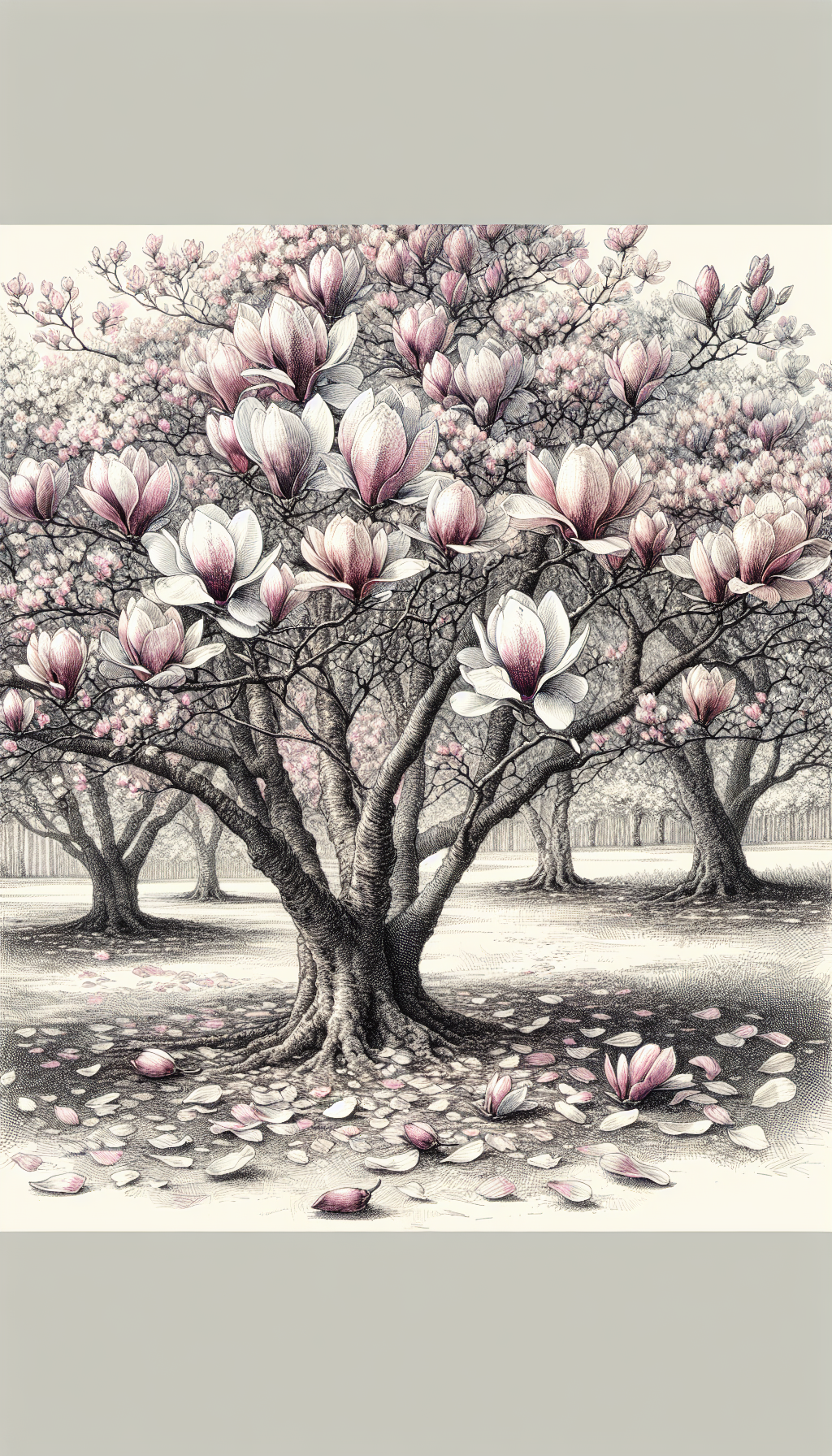With their majestic beauty and captivating charm, magnolias are a timeless presence in gardens, parks, and landscapes around the world.
These horticultural wonders, known for their impressive size and vibrant, large flowers, have a rich history and offer a plethora of benefits that contribute to their enduring popularity today.
Magnolias are one of the oldest flowering plants, dating back millions of years. Their antiquity is reflected in their unique floral structure – magnolia flowers do not have true petals and sepals; instead, they have tepals, which are indistinguishable. This ancient lineage and unique characteristics have intrigued botanists and garden lovers alike, making magnolias a subject of continuous study and admiration.
Their spellbinding appeal makes them a standout choice for ornamental landscaping. Renowned for their spring display, magnolias are cloaked in resplendent blossoms, ranging in color from creamy white to hot pink. The flowers, often fragrant, add a dreamy allure to any outdoor space. However, their display is not confined to spring alone. Some species also produce a summer encore, ensuring a visual treat throughout the warmest months of the year.
One of the most beloved varieties is the Southern Magnolia, a staple in many American gardens. Known for its expansive, glossy green leaves and large, creamy white flowers that emit a sweet, lemony fragrance, it is a symbol of elegance and Southern hospitality.
Equally enchanting is the Star Magnolia with its star-shaped flowers illuminating the garden in the early spring. Further east, the Japanese and Chinese magnolias, such as the Saucer Magnolia and the Lily Magnolia, steal the show with their vibrant, cup-shaped flowers.
Beyond their undeniable beauty, magnolias have other attributes that make them a worthwhile investment for homeowners and gardeners. They are generally hardy and resilient, able to withstand varying weather conditions. Moreover, they are low maintenance trees. Once established, they require little care beyond occasional pruning to maintain their shape and remove deadwood.
Magnolias offer environmental benefits as well. They play a significant role in supporting biodiversity by providing food and shelter to various species of birds, insects, and small mammals. Their large leaves act as a natural rain catchment system, reducing soil erosion and improving water quality.

For those interested in using magnolias in their landscape, it’s essential to consider the tree’s mature size and its adaptability to the local climate. Soil type, sun exposure, and access to water are other crucial aspects to be mindful of. Fortunately, with hundreds of species and numerous hybrids available in the market, there is a magnolia to suit almost every garden or landscape.
Even in the realm of symbolism, the magnolia holds prominence. In Chinese culture, it is a symbol of nobility and perseverance, while in the South, it signifies beauty and strength. The allure of magnolia extends far beyond its physical attributes, making it a tree of choice for many.
A true spectacle of nature, magnolias captivate us with their grandeur and elegance, making any environment more beautiful, harmonious, and engaging. From the early spring blossoms to the late summer encore, their magnificence is a sight to behold, a timeless reminder of the splendid diversity and beauty of the natural world.